By Keith Grabowski
Offensive Coordinator
Baldwin-Wallace College
Like our inside zone play, our one back power is an aggressive and physical play that has several similarities. First, both schemes have the offensive line going in one direction. Just like zone, everyone is responsible for a gap. In our zone concept, everyone blocks their play side gap. In our power concept, it works opposite with all linemen responsible for their backside gap with one player kicking out. Additionally, both use combination blocks. In our run game we want to find as many double teams as possible. With our inside zone we can have up to two double teams, and Power gives us a double team at the Point of Attack.
Because we have similarities between the two concepts, our run game allows us to emphasize the execution of fundamentals and techniques. For example, what we call a "Backside B" technique on zone play is very similar to our "Deuce Block" on the power play. We can work that single technique in a drill.
From a strategic standpoint, both our zone and power concepts are flexible schemes. Both can be run from multiple formations. These runs provide a balanced attack which can run to both the tight end and split end sides. The rules of our concept are very similar with one back or two back power. Both hit in the A-gap with someone responsible for the Sam linebacker. In two schemes, that back would be the fullback. In one back schemes we remove him by positioning a receiver outside the box and forcing the defense to cover down on that receiver. Furthermore, the schemes adapt to the different types of defense that we may see, whether they prefer a penetrating, reading, or pressuring style.
When running the power scheme there are three main keys that must be accomplished to be effective:
- Gaps always override people.
- Blocking angles are essential.
- A devastating combination block is needed at the point of attack.
Key #1: Gaps always override people (Diagram 1). Because we are always gap responsible first, this is a sound scheme versus defensive line movement and blitzes.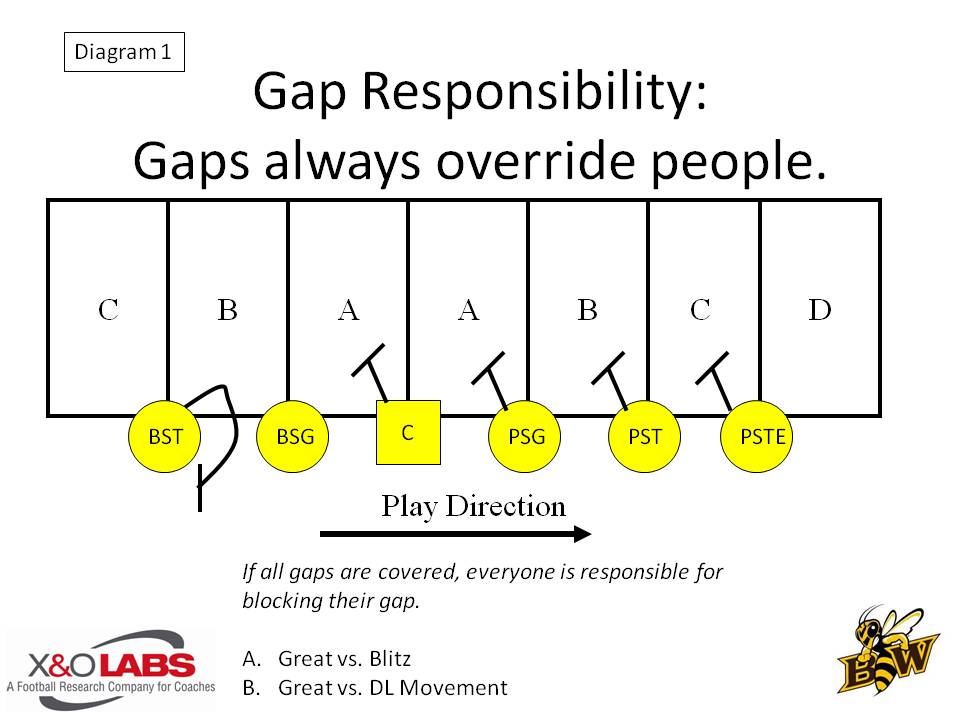
Key#2: We create favorable blocking angles by declaring the LB that we will kick out (Diagrams 2-4).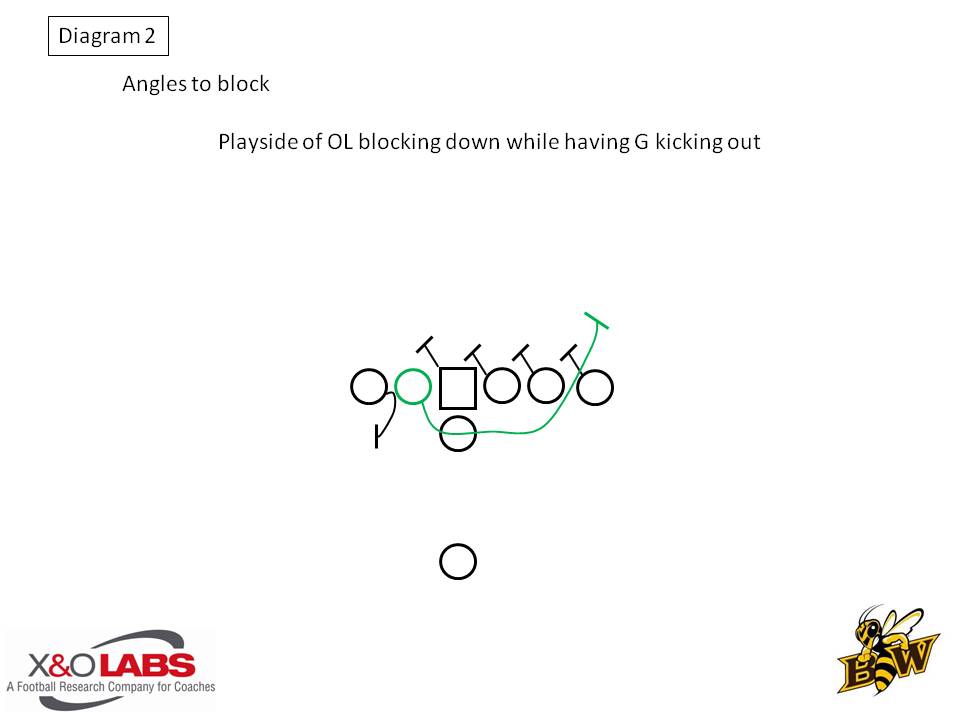
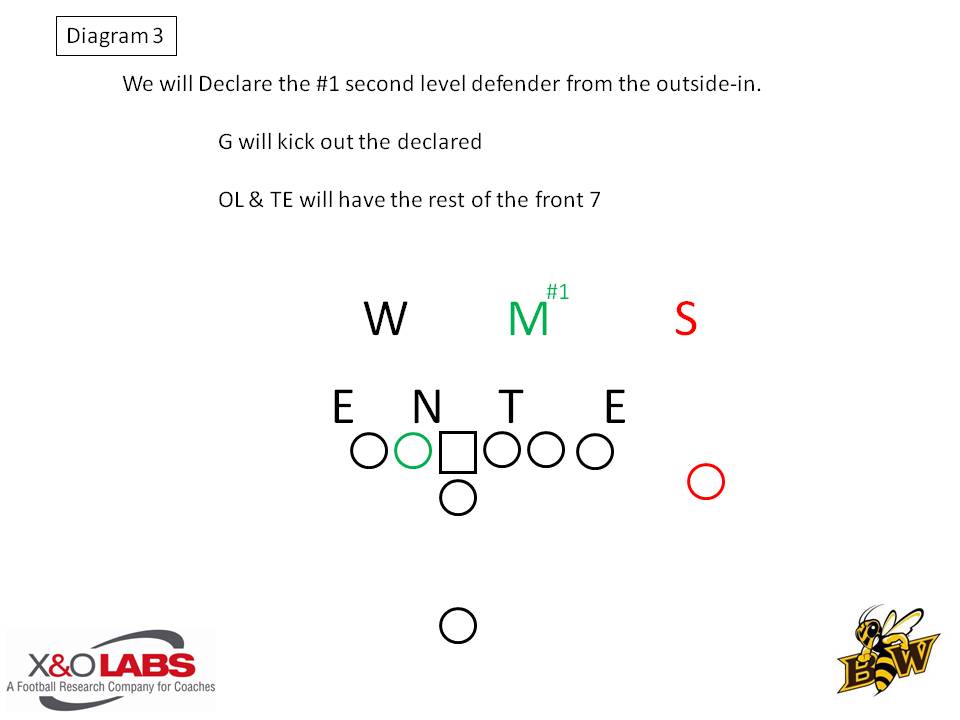
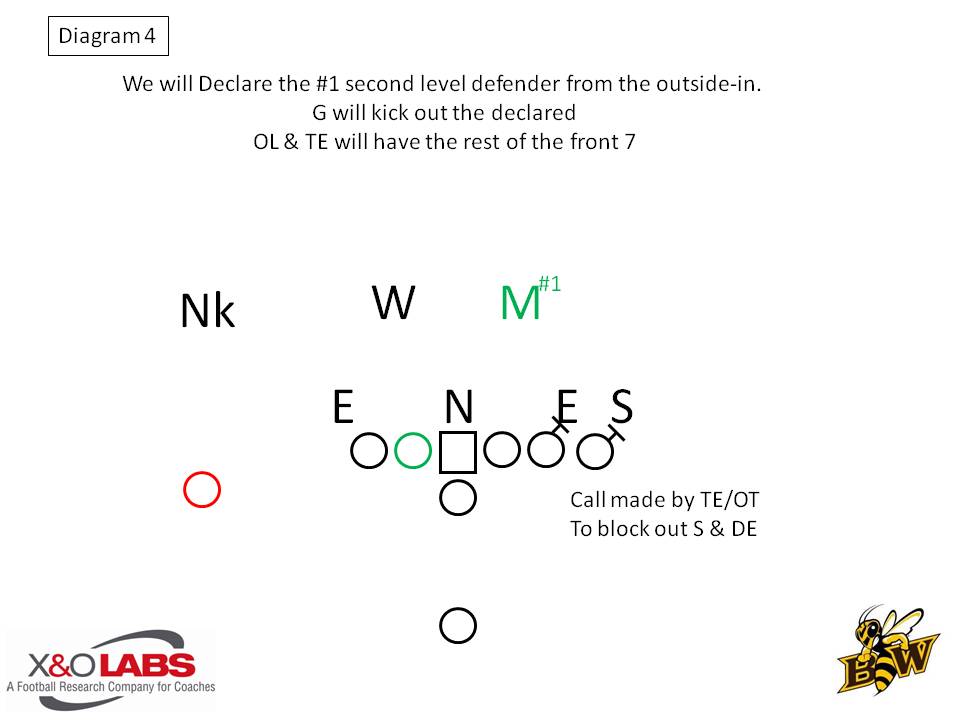
Key #3: We look to create a double team or combo block at the point of attack (Diagram 5).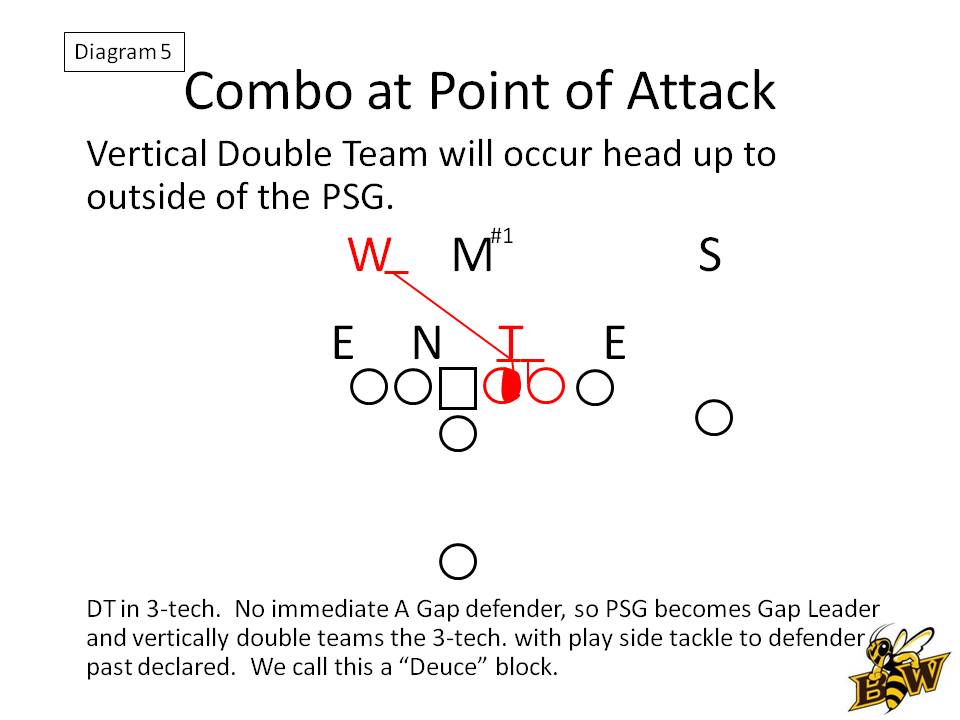
Our blocking assignments and techniques for all linemen and backs are as follows:
Post Man (PSG)
Description: This player could be a play side guard against a 3-technique defensive tackle. We prefer to run it to a 3-technique, because the play hits tighter and gets downhill quicker. He is responsible for posting the down lineman to his outside gap. The objective is to get vertical displacement at the point of attack the work to backside linebacker past declared. He is still responsible for his inside gap.
Landmark: Inside number of down defender
Approach:
- 1st step settle with inside foot. (Up and down(settle) step with gap responsibility like zone)
- 2nd step power step. 2nd step thru the crotch(Lead step-same as zone)
Contact: Lazy forearm with outside arm (See Image "Combo at Point of Attack1")
Follow-thru: Play side foot thru the crotch and backside foot lags behind. Strain defender off you which will bring your hips underneath you.
Finish: Push off play side foot and get off to BSLB past declared. Drive on vertical line; don't get off until he comes to us. Aiming point is the backside number with a double under punch. In the double under punch we get our hips and our hands involved. Can't have hips behind.
Coaching Points:
- If there is a man in the gap there can't be a gap; tighten down your split with PST. We will tighten our split from two feet to foot to foot.
- Stance should be parallel so second step goes thru defender’s crotch. He won’t have a long way to travel. First step is a brace step, right into the ground. Our second leg needs to get down quickly and not lean into defender. He will not be able to get skinny to play into the post man.
- Strike must be with shoulder and flipper.
- Get movement on the DL but still look to your gap responsibility for LB run-thru.
- Keep backside foot high, want play side leg into defender (right leg if you're going right). Don't want stagger to come forward, don't want our left hip into the man because it keeps our shoulders square.
- Come off to BSLB and attack the backside number of LB which increases the chance he will bubble over top, more allowing a bigger running lane to the RB who is hitting A-gap. Also can’t come underneath to make the tackle.
Drive Man (PST)
Description: This refers to a play side tackle in the one-back power play. Drive a defender in the inside gap vertically with the Post Man. The objective is to get vertical displacement at the point of attack. The only time we will come off is if the down lineman plays into the inside gap of the post man.









